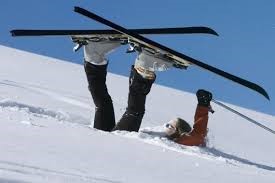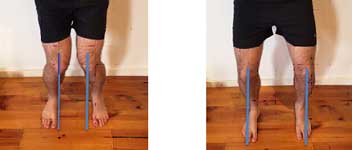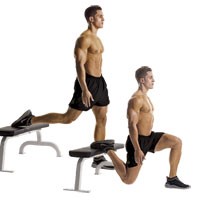Physio Blogfrom the team at South Coast Physiotherapy
Displaying items by tag: ski
Reduce Injury Risk on the Slopes
When heading to the snow as a first timer or returning to the mountain for the first trip of the season it is important to prepare yourself for the snow conditions. Strategies and steps such as massage can be put in place to reduce the risk of injuries and other factors enabling you to get as much out of your snow trip as possible.
When snowboarding and skiing we are utilizing muscles groups that we wouldn’t use on day to day bases therefore there is increased risk of injuries occurring.
The main muscles groups used are core, hamstrings, glutes, quads, calves and as for beginners our arms from pushing yourself up.
The common types of injuries that can occur for skiers and snowboarders are wrist fractures, ACL and knee injuries, whiplash, concussions, shoulder and elbow dislocations and dehydration.
There are several benefits of massage pre and post your snow trip experience not only reducing the risk of injuries but also other aspects such as:
- - Increasing the removal of bio products, lactic acid and reducing muscle soreness (DOMS)
- - Increasing the recovery rate and reducing the rate of muscle fatigue therefore allowing more time on the hill
- - Massage increases Rom and flexibility which then improves proprioception and body awareness
We can also look at others strategies such as strengthening exercises specific to muscle groups and for the individual, snow/safety gear as well as warm up and recovery programs heading on and coming off the mountain to ensure you get the best snow experience possible.
Skiing injury Prevention
With both Australia and New Zealand having good snow seasons this year and following a recent run of patients suffering snow related injuries I have decided to write this blog on injury prevention when on the slopes.
Risk of Injury
Although skiing and snow boarding are generally associated, as high injury risk activities recent research looking at the prevalence of these injuries has shown a recent decline. The numbers have reduced from 5 – 8 injuries per 1000 skiers to 2 – 3 per 1000.

Research has also shown that the most common injuries in skiing are to the knees which accounts for ⅓ of all injuries and that in snowboarder’s injuries to the wrists are the most common. A study in Japan showed that snowboarders had twice the injury rate of skiers and interestingly a study looking at a terrain park in Canada showed that snowboarders who were listening to music were less likely to have an any injury but more likely to have an injury which resulted in them being taken to the emergency department!
When looking at preventing injuries there are obviously areas that we have no control over, which can increase the chances of injury. These can include poor visibility, the quality of the snow and crowded pistes. However there are also many areas that we can control such as wearing protective garments including wrist protectors and helmets.
Conditioning
One area that has been proven to reduce injuries in skiing is through skiing specific physical conditioning. With snow based disciplines, as with the majority of sports, it is important to be balanced and maintain good alignment and weight distribution through your trunk and lower limbs. However, unlike a lot of other sports, with skiing you are trying to maintain a relatively static position while travelling fast down a hill. This, therefore, is going to require different muscle activity and joint positioning compared to an activity such as running, meaning a specific conditioning program is necessary.
Alignment
When looking at skiing you need to assess your alignment to avoid excessive loading through your knees and hips. A lot of pain experienced through the front of the knee with skiing is a result of over loading through the patella femoral joint (where the knee cap sits). When you go into your skiing position your knees should be in line with your 2nd to 3rd toes and not dropping in towards the inside of your big toes. (as shown in the figure below)

Knee dropping inside the big toe: incorrect Knee in line with the 2nd to 3rd toes: correct
Once you have addressed this imbalance it is then important that you are achieving the correct hip and knee movement. As you go into the skiing position your weight needs to be more into the front of your feet rather than at the back as this will distribute your weight in a more uniform pattern through your skis giving you greater control. This is slightly different to the sit stand motion we use on a daily basis where our weight is distributed more through our heels and therefore it can take a little bit of training to get right.
Strength
In order to maintain this alignment it is vital to have good strength through the gluteal and quadriceps muscle groups. Due to the down hill nature of skiing the quadriceps need to be worked eccentrically. This means they are worked from a straight knee position to a bent knee position and the quadriceps muscles are lengthening. Two of the best exercises to achieve this are deep squats and vertical split squats (as shown below).

Vertical Split squats
Proprioception & Endurance
Proprioception is the body’s awareness of where it is in space and is therefore a very important factor in reducing injury risk, especially when skiing in poor visibility. Simple ways to address this are through balance exercises such as single leg standing with eyes closed.
Similar to other sporting injuries, skiers and snow borders are more vulnerable as they get more fatigued and this can be addressed through generic cardiovascular exercises such as cycling and running.
It is important to mention that these guidelines are for uninjured skiers. If you have an ongoing complaint or old injury then a more specific personal program would be necessary.
Happy Skiing……